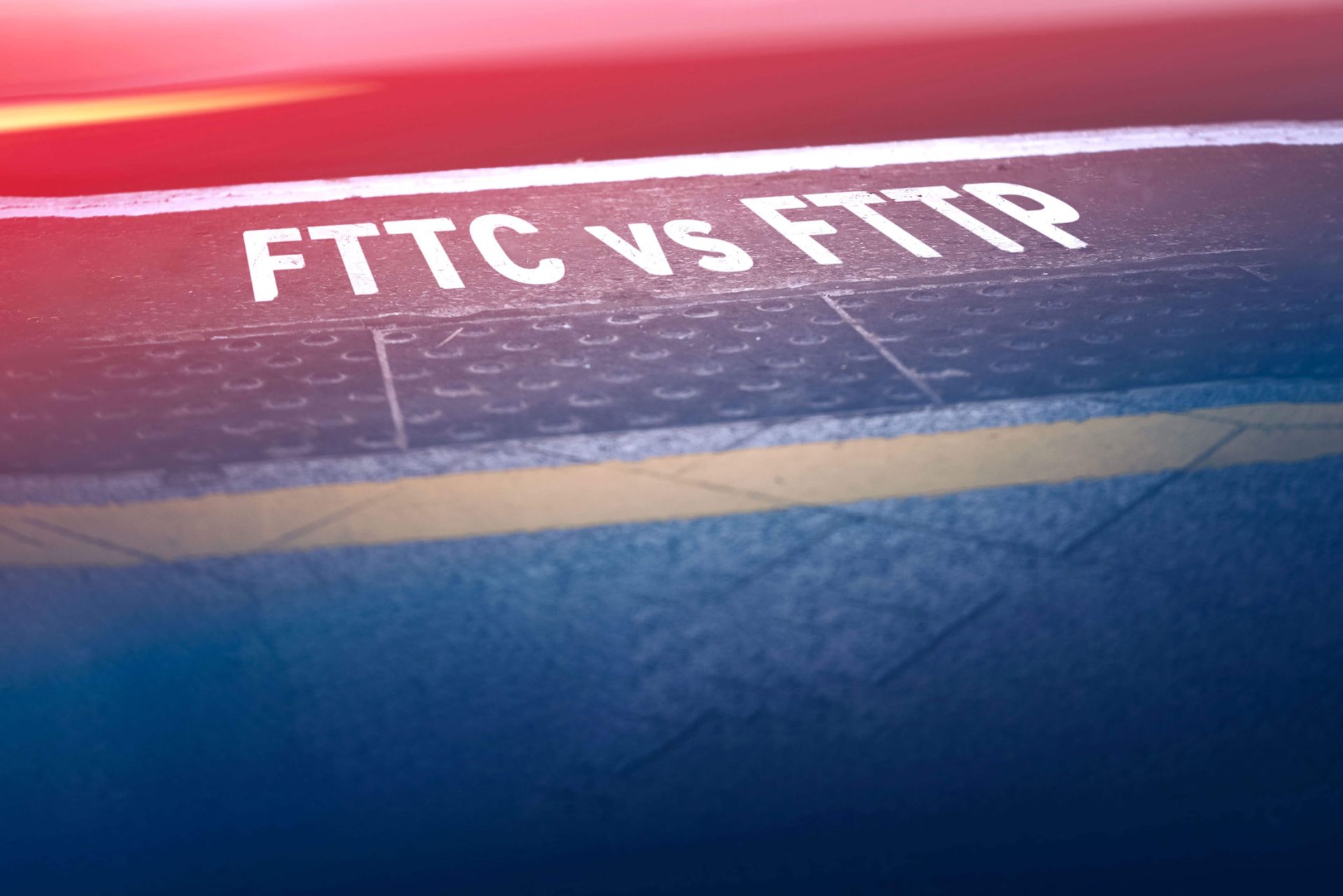Fibre to the Cabinet (FTTC) will be bidding a final farewell to homes and businesses by the end of 2025 to enable new technologies to prosper in this advancing digital age. Fibre to the Premises (FTTP) is one of the worthy contenders in line to replace FTTC for good.
But before any decisions are made, understanding the difference between the two broadband solutions is a solid starting point to make the right call for your business.
Fibre to the Cabinet (FTTC) and Fibre to the Premises (FTTP) are both methods of delivering high-speed internet access, but they differ in the extent to which fibre optic cables are used in the network infrastructure
Fibre to the Cabinet (FTTC)
FTTC broadband uses fibre optic cables to connect the exchange to the local cabinet. It then utilises copper cabling to pass data from the cabinet to the premises and voice data back to the exchange. Since FTTC utilises traditional copper wire to communicate voice data back to the exchange, it will become obsolete with the retirement of the PSTN. However, the stop sell on September 5, 2023, will mean the purchase of FTTC products after this cut-off date will be impossible.
This is why customers are being advised to take action now and upgrade to an alternative future-proof solution to avoid communication and connectivity issues when the Public Switched Telephone Network (PSTN) is permanently powered down. Switching now, will not only save you money, but it will also eliminate the concern of your business being stuck in a communications blackout when FTTC eventually retires.
Fibre to the Premise (FTTP)
FTTP is technology, also known as full fibre broadband, that delivers seamless internet access to your location by running fibre-optic cables directly from the exchange site into your business. Unlike copper wires which disintegrate over time, fibre cables are much more resilient.
Fibre to the Premises has the capacity to provide faster speeds, up to 1gb/s, which is ideal to complete tasks seamlessly– whether that’s to upload and download files to your server, attend virtual meetings, or collaborate with team members on heavy projects without breaking a sweat. Users connected via FTTP can access much higher speeds and more consistent performance compared to FTTC or traditional copper-based connections. FTTP is generally considered the most advanced and future-proof option for delivering high-speed internet access, as it eliminates the limitations associated with copper cables.
FTTC vs FTTP
In summary, Fibre to the Cabinet uses a combination of fibre optic and copper cables, with fibre optic cables running to street cabinets and copper cables connecting individual premises to the cabinets. Fibre to the Premises, on the other hand, involves running fibre optic cables directly to individual premises, offering potentially faster and more reliable internet access. While FTTC can still provide significant speed improvements over traditional connections, FTTP represents the cutting edge of broadband technology and offers the highest performance and reliability.
